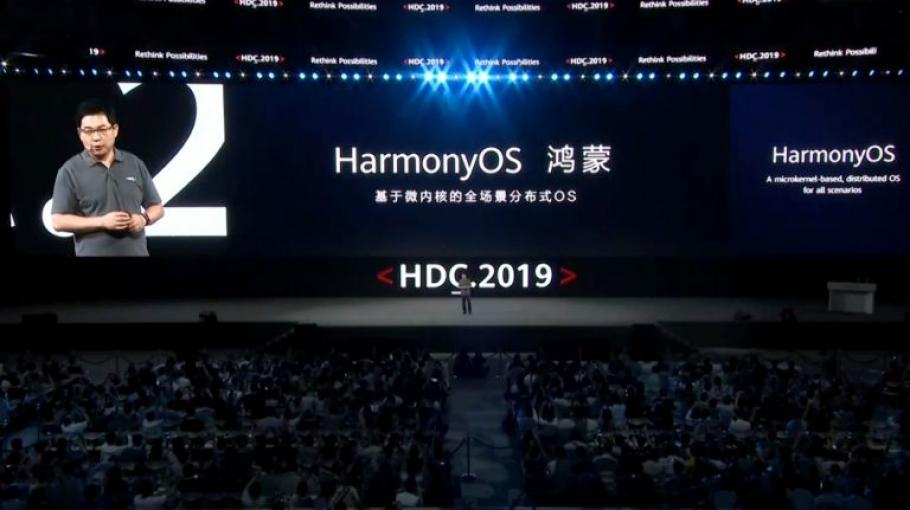HarmonyOS: Huawei Officially launched Its Own Operating System
Huawei has introduced its own operating system, said the Chinese Electronics Giant’s Customer Service Department (HungmengOS). It will be called HarmonyOS in English as mentioned on Friday by Richard Yu.

HarmonyOS: Huawei Officially launched Its Own Operating System: Image Source
Yu said that the operating system can be used from smartphones to smart monitors and even cameras across different systems during the conference of Huawei Developer in Dongguan, China. It is an integral part of the game of Huawei in the Internet of Things that refers to Internet-based computers.
This year, for the first time HarmonyOS is being used on “smart display products” like TV. In the next three years, the operating system, including car wearables and headers, will be used in another system. Huawei said the OS would implement an initial global growth plan in China, Yu said. Yu said. In May, the US placed Huawei on a blacklist — or the so-called “entity list”— that essentially restricts some American companies from supplying the Chinese company with their goods.
Google said we stopped working with Huawei following that step. However, several days ago, the US government loosened some of those restrictions, enabling Google to work with Huawei for 90 days. This timeline is nearly over.
The Chinese telecommunications machine manufacturer had previously openly admitted that it had a system of its own in the arts. Yu said it still “unknown” whether they are allowed to use Android; however, any prohibition will not affect current Google OS products. “We hope that there will be a revision,” said Yu after the announcement at a press conference.
How does HarmonyOS work?
HarmonyOS is an open-source, meaning that other device producers could use their operating system theoretically. Opening it can help to increase its size and encourage more users to create applications for the operating system. A large number of useful applications are essential for making any operating system efficient.
Yu said “many” computer manufacturers “much interested” in using this OS but did not label it. He said that he believes a large amount of separate appliances linked to the Web does not account for today’s work technologies— including Android and AppleiOS.
The HarmonyOS is designed for the production of one system software ranging from large-scale laptops and smartphones to small device such as bandwidth sensors. Huawei expects apps to work in this way on numerous computers.
Since the company offers products from smartphones to smartphones, it can help its business eventually. It could eventually aid Huawei by regulating knowledge through hardware and software voluntarily to produce distinguished products. It is a recipe that helped Apple discover the success of its competitors.
Easy to move from other operating system to HongmengOS
Yu informed the media in May, that by the middle of the year and by mid2020, China’s own operating system can be ready for smartphones and laptops. Yu then said that only if Huawi was unable to access Microsoft, Android or Google operating systems then we would use the OS for smartphone and laptop.
In China, Google services are actually closed. Huawei’s domestic industry therefore uses an amended Android variant, deprived of Google’s apps. This means that China doesn’t have Google links in China as a major problem. If it were not allowed to use Android globally, however, Huawei comments said that it might harm the Chinese smartphone company in overseas countries.
Yu said it would better be Android on its smartphones if Huawei were to move to HarmonyOS. “If we can’t (android) use it in the future, we can immediately switch it to HarmonyOS,” said Yu. “It is a great idea, but I don’t know if I can.
Crossing the various systems of China, Neil Shah, a counterpoint research analyst, has declared that Huawei’s operating system is a “big chance.” However, if it can be supported by developers, it will rely on its smartphone performance. “So Huawei’s store is well-appointed, but it requires stronger products and facilities in the store to capture, sell, and make purchases time and again,” Shah said to media. Shah told that “The services are even more tight and stronger, which Huawei lacked to be adopted.”
HongmengOS Launch Year
Earlier this year, before extending HarmonyOS over three years to other appliances, such as wearables, Huawei intends to launch it on “smart display products.” The Honor Smart Screen is the first such product, scheduled for presentation on Saturday. Huawei must still state clearly what a “smart display” television is? But Reuters has previously said that a variety of smart Honor televisions are featured on OS. First, before Huawei extends its operations to other markets, its system will focus on products for the Chinese market.
In a statement, Huawei’s Chief Consumer Group Officer, Richard Yu, says HarmonyOS is’ completely different from Android or iOS.’ “You can build your apps once and then flexibly implement them across a number of systems,” says the CEO.
Whether HarmonyOS would be a smartphone or the Internet of Things devices was previously not understood. Now, it is designed to control both, similar to the Fuchsia operating system of Google, which is designed for a range of form factors.
While the OS will reach more devices over the coming three years, Huawei said in a press release that it plans to continue to use Android on its phones “for now.” CNBC states that Yu says that the press conference scenario after launch was “unknown” if Huawei could still use Android and that the company was “hoping for a review” to find.
In July, senior officers said that the administration would grant permission to deal with Huawei in cases where national safety would not be affected. Yesterday, Bloomberg revealed that, following China’s decision to stop the acquisition of U.S. agricultural products, the White House is stopping its decision to issue these allowances. Another proposal is that Huawei’s restrictions relate so much to the US-China trade conflict as to the defense of national security.
HarmonyOS is now officially named but still faces a few major obstacles. Huawei expects designers to recompile their applications for this new operating system so that they can once design and install individual display layouts, connections and more across various systems. In a given setting, Huawei says that a number of languages are compiled into machine code. There are many great commitments here, but it’s an even bigger task to build a competitors’ Android ecosystem with both Android Open Source Project (AOSP) and Android.
Read Next: Xiaomi Allows MIUI Update Plan for Android Q



